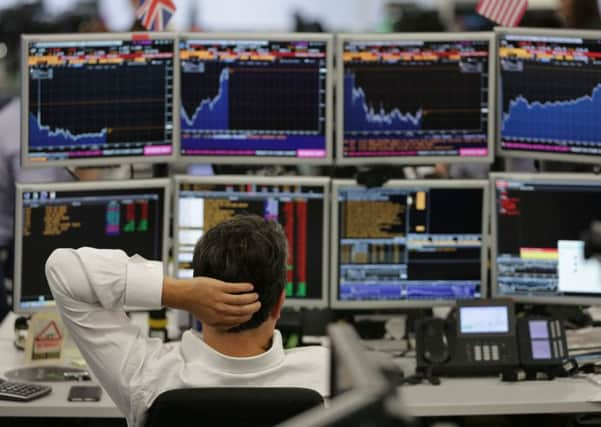Anderson Strathern Asset Management: Should investors head for the exit?


At a time of turbulent markets, should you fasten your seatbelt – or look for the nearest exit?
At the end of October, the majority of financial markets are in negative territory with the exception of the S&P 500, which is holding onto a marginal gain. The strong dollar continues to add a few percentage points for sterling-based investors, Asia and Latin America keep struggling and you only have to turn on the TV to see there is little in the way of good news in the UK.
Advertisement
Hide AdAdvertisement
Hide AdYields on mainstream government bonds have generally moved higher. The benchmark ten-year bond in the US is now offering a yield over 3 per cent, having opened the year just below 2.5 per cent. This may not seem like a big change but equity markets do not agree, as the movement higher has undoubtedly pushed stocks lower. Moving into the 3 per cent realm is psychologically significant rather than economically noteworthy and, in years gone by, stocks have remained fairly calm until the 3.5 per cent barrier has been breached.
While we started the year on an encouraging footing, there are rising tensions from a global trade perspective. Although President Trump gave corporate America a boost with his tax cuts and there appeared to be a synchronisation of global growth early in the year, the ebb and flow of the trade war conversation is now stressing the markets. The current inability of China and the US to reach a middle ground prior to the G20 summit is causing nervousness in the markets. The prospect of the US imposing another $200 billion (£156bn) of tariffs on Chinese imports in 2019 is growing and we should expect these tensions to play out in the financial markets.
Meanwhile, investors and companies continue to grapple with Brexit and its ramifications. Issues in Italy are escalating and there is a softening of economic growth in other pockets of the globe. Taking centre stage next month will be the mid-term elections in the US. Eyes around the world will be focusing on the House of Representatives, where a shift in majority will certainly shake things up. Whether this is seen as a positive or negative, markets, bonds, equities and currencies do not revel in uncertainty, prone to react in a rather knee-jerk fashion, and it looks like volatility is to continue in the short term.
Overall, we think recession risk is fairly low. While it seems clear that global growth will moderate, while inflation is contained we hope that central banks will take note and are mindful of moving too aggressively along the higher interest rate path. With the recent volatility in the markets, there has been a movement from a focus on growth to fears over inflation and equity markets are in better shape to respond to favourable data once the dust settles.
So, is there light at the end of the tunnel? The current reporting season should provide some evidence of the strength of corporates from a profitability perspective and insight into their vision for the coming year. Any hiccup in meeting market expectations or pessimism in outlook may well indicate that the current sell-off has more to run and we may see markets fall further.
However, that is not where we are hanging our hats at the moment. We are certainly mindful of changing dynamics and the emergence of tail risk in the markets, and so continue to focus on investing with mangers who are long term in their investment approach, diligent in their company research, and able to stress-test their ideas to changing scenarios.
The autumn months are rarely fruitful hunting periods for equity investors, and this seems to be playing out in 2018. Although the seatbelts may be beneficial to smooth any bumps still to come, it will be interesting to see if investors hold their nerve and do not, instinctively, hit the “sell” button.
Fiona Gillespie, senior investment manager, Anderson Strathern Asset Management